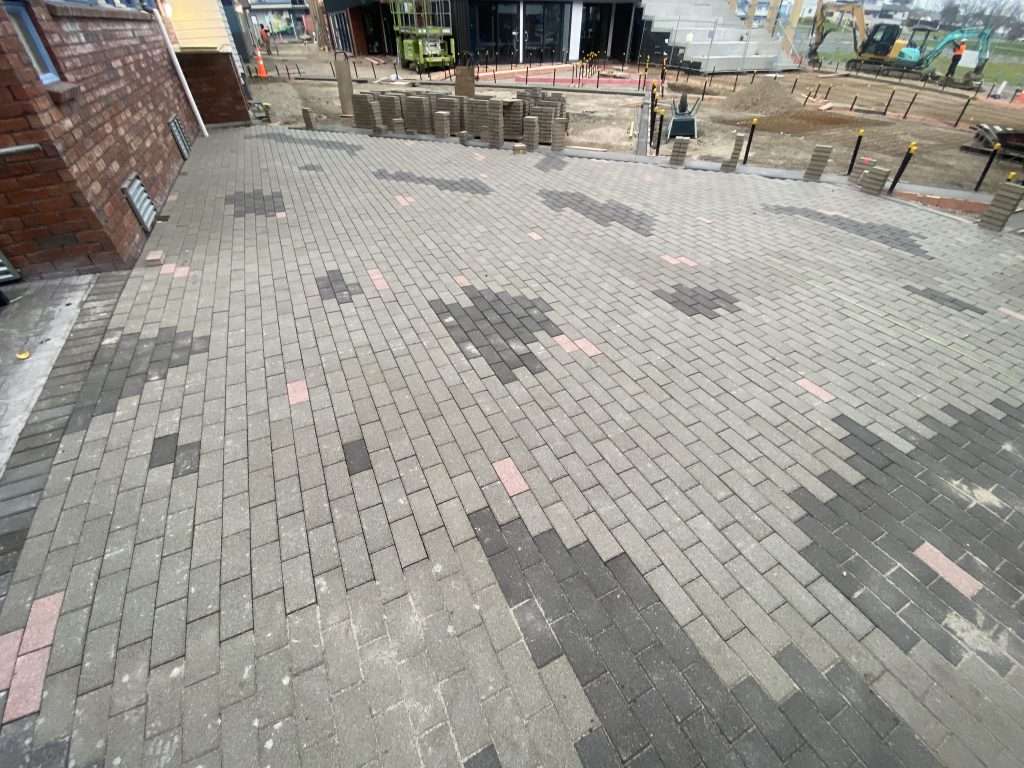When considering paving solutions for different projects, it’s important to understand the distinctions between available options, such as dry cast paving and mortar based paving. Each type has specific attributes and use cases, making them suitable for various environments. Here, we’ll explore these two popular methods, highlight their differences, and discuss their optimal applications.

What is Dry Cast Paving?
Dry cast paving is a widely used method known for its cost-effectiveness and versatility. The process involves compressing a dry concrete mix into moulds under extreme pressure. This method does not require the concrete to be cured in the mould, allowing for faster production rates and lower costs.
Characteristics and Benefits:
- Cost-Effectiveness: Due to its streamlined manufacturing process, dry cast paving is generally less expensive than other paving methods.
- Variety: There is a wide range of styles and designs available in dry cast pavers, including options that mimic different textures and colours.
- Permeability: Some dry cast pavers are designed to be permeable, making them ideal for managing rainwater runoff and complying with urban regulations that aim to reduce flooding.
Use Cases:
Dry cast paving is particularly suitable for driveways, walkways, and patios where cost is a significant consideration, and high load-bearing is not critically required. The variety in aesthetics also makes it a popular choice for residential landscaping projects.
What is Mortar Based Paving?
Mortar based paving, sometimes known as wet cast paving, involves pouring a wet concrete mix into moulds and then curing it within the mould itself. After the pavers are set, they are installed on a mortar base, and the joints between them are filled with mortar. This method is known for providing a cleaner, more refined finish.

Characteristics and Benefits:
- Cleaner Finish: Mortar based paving offers a smooth and seamless finish, which is aesthetically pleasing and easy to maintain.
- Durability: The use of mortar in both the base and the joints creates a strong, cohesive surface that is well-suited to areas with heavy foot traffic or load requirements.
- Customisation: Wet cast pavers can be crafted in various shapes and colors, providing more customisation options for specific design needs.
Use Cases:
This type of paving is ideal for pool surrounds, where a smooth, non-slip surface is necessary for safety and comfort. It is also preferred in high-end landscape designs where a visually striking appearance is desired. The durability and finish of mortar based paving make it suitable for public spaces and luxury residential areas where aesthetics and longevity are priorities.
Conclusion
Choosing between dry cast and mortar based paving depends largely on the project requirements and budget constraints. For those who need an affordable and versatile paving solution, dry cast pavers offer a practical choice. In contrast, mortar based paving is better suited for areas requiring a more refined appearance and greater durability, such as around pools and in upscale landscaping projects.
Understanding these differences can guide you in selecting the best paving method for your needs, ensuring both functional and aesthetic requirements are met. Whether you choose the economical dry cast or the premium mortar based approach, both methods provide reliable solutions tailored to various applications.